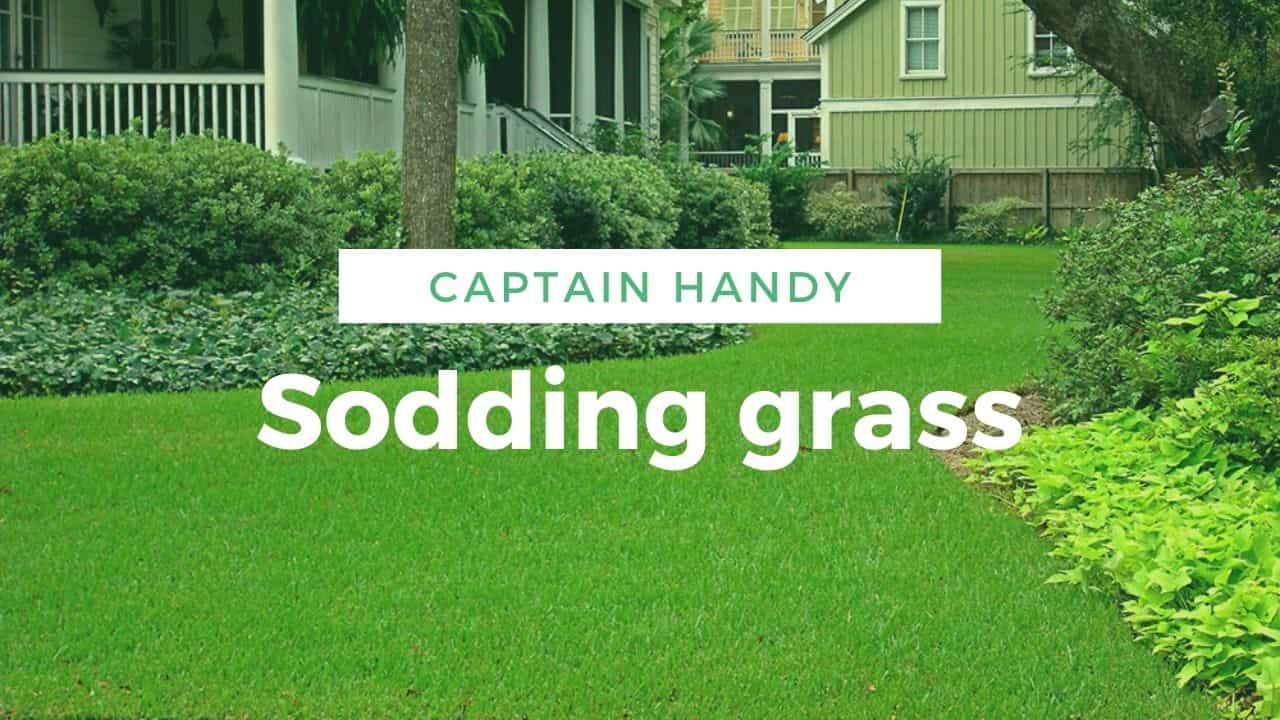
Certainly lovely sodding grass form a dense and beautiful green cover in Toronto. Exquisite grasses have a somewhat slower growth when laid, but they also grow slowly once fully established. Intensive care at the laying stage predestines the lawn for a superb appearance. Industrial grass seed mixes have faster growth when establishing a lawn and faster growth of the grass stand. Industrial grass mixtures do not require additional care during laying.
Table of Contents
Sodding grass – Determining location
A sodding grass does not have to be horizontal. Slopes can also make beautiful lawns. A good layout is important. The uncultivated soil should be properly planned for later seed placement.
Sometimes a small slope down from the house is often more advantageous.
In this case, you can level the bottom layer of soil to achieve a highly decorative lawn. In many cases, it may be necessary to remove the topsoil before leveling. After leveling, the topsoil is returned to its original place and shaped to the same thickness.
- The use of lawn netting also achieves the creation of a lawn on slopes with a high slope.
- To strengthen slopes, you can also use industrial grass mixtures designed to strengthen slopes and gullies.
Preparing the soil
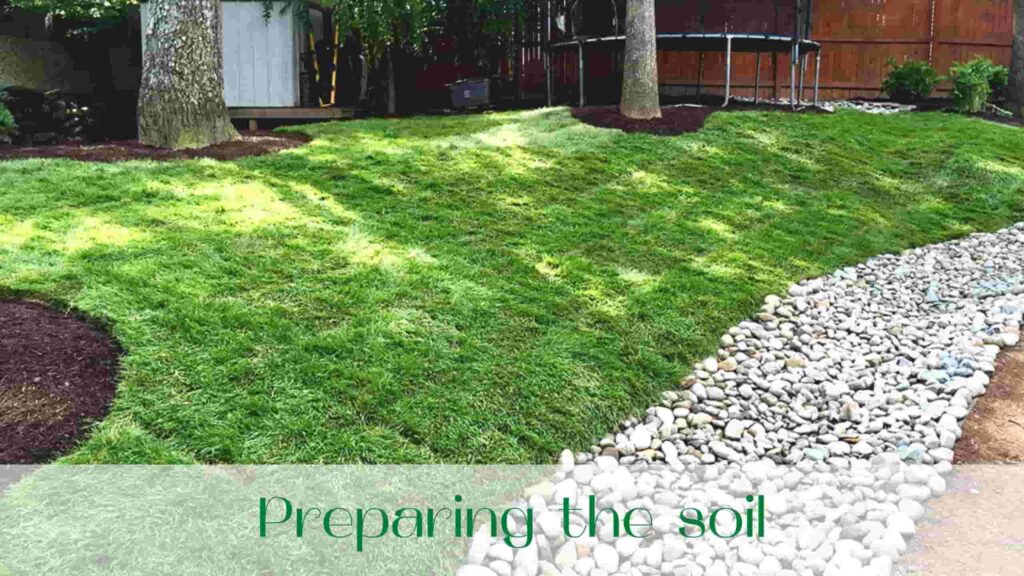
The best lawns are obtained on sandy loam soils.
If you have clay soils, in order to create a better root zone, it is recommended to pour a layer of sand with a thickness of 5 – 15 cm. Peat is usually not added. The top layer of soil is mixed to a depth of 10 – 20 cm, so that no lumps remain. For compaction, it is better to tamp the soil on small areas with your feet, on large areas use a lawn roller.
All work on mixing and preparing the soil should be carried out on dry soil.
Treating the soil Seeding layer
Prepare the seed bed for laying your lawn very carefully. Make sure that your drainage system goes through the soil layer in which the roots develop.
The soil is pre-cultivated to a depth of 10 – 15 cm.
If you have recently built a house or moved into a new house, remove construction debris (stones, bricks, large chips, etc.) and all other unnecessary items. Never plow it all up, as you will create unfavorable conditions for the grass root system to develop, and you risk damaging your equipment in the process of taking care of the lawn.
Root out the stumps (if you do not want to use them for decorative purposes), remove the shoots of trees.
How to remove weeds from a lawn
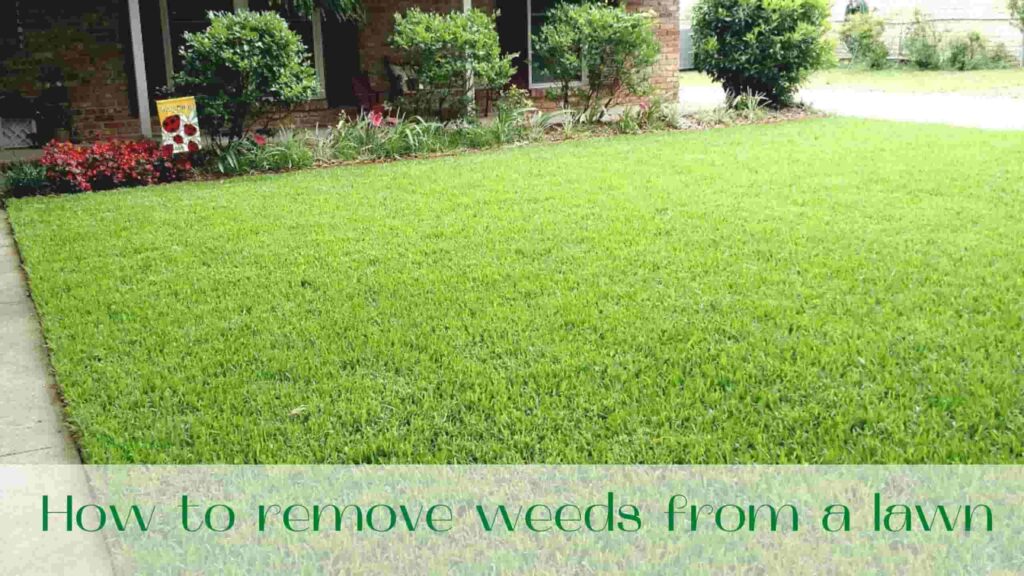
If the soil has not been cultivated for some time, it will be a good idea to free it of weed seeds before sowing grass or before laying sodding grass, otherwise they will germinate and cause trouble in the newly planted lawn. The best way is to loosen the entire area at regular intervals as weeds emerge, until the best time to sow the grass is right.
Weeds are usually eliminated by one of two methods:
- Mechanical – Pull out large dead or growing stems of perennial and annual weeds. Then everything else as low as possible mow or do a weeding;
- Chemical (the most effective) – treat vegetating weeds with herbicide of continuous action. Such preparations decompose in the soil not immediately and retain their effect for several days, so sowing should be carried out at the time recommended for each drug (on average, 3-4 weeks after spraying). During this time you can carry out the rest of the soil preparation operations.
Preparing for sowing
Before sowing, the whole area to be sown should be planned out definitively. The purpose of planning is to get rid of bumps, holes, hillocks and hollows. In areas with small bumps and pits, it is better to fill in a fertile layer of soil from elsewhere. It is not necessary to create a horizontal surface on the site – it can have a slope that saves the lawn from stagnant water.
A wooden bar can be used for this purpose. If the leveling allows, the soil is leveled with a rake to loosen a few centimeters of the top layer.
Lumps, stones, weeds etc. should be removed. If you brought in new fertile soil, level it. Plant soil if the thickness of the fertile layer of soil on the site is less than 10 cm.
On uneven areas, remove the top layer of soil and level the ground, then return the removed layer of soil in place.
Check the levelness with a long plank or step ladder.
Drainage
Drainage is done in areas where water stagnates after rains, watering sodding grass, melting snow.
Before returning the fertile layer of soil removed during leveling, pour a layer of gravel of large stones or broken bricks 10-15 cm in height on the non fertile soil and tamp it well. Then lay a layer of small stones or sand 15 cm high and also tamp. After all that, return the removed fertile layer of soil to its place.
So the soil profile of your plot will look like this:
- 15-20 cm fertile layer;
- 10-15 cm layer of sand or small stones;
- 10-15 cm a layer of large stones;
- Then there is a layer of infertile soil.
In-soil irrigation system for sodding grass
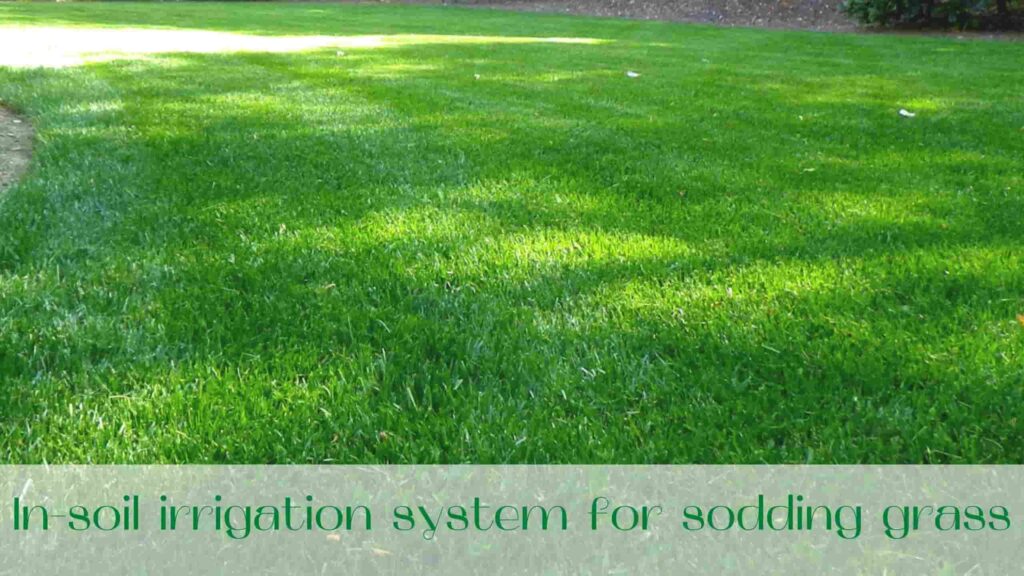
Creating an in-soil irrigation system is a process that requires proper calculation. If you decide to create such a system, consider the following:
The water pump pressure must match your irrigation system, ensuring it is fully loaded;
- there must be enough water for at least one irrigation;
- The water tank, timer, and pump must be located in a warm place to avoid damage to the system due to frost and freezing temperatures;
- it is better to use metal pipes or sturdy mastic or reinforced hoses to transport water inside the soil;
- Do not allow water in the system to freeze in winter, which can cause pipes and hoses to burst.
- Blow out the system after the last irrigation, using a compressor or water pump if equipped to do so;
- lay the system in deeper layers of soil where water does not freeze (this is only possible in regions with warm winters);
- before burying the system in the soil, test its operation in different modes (watering, blowing), placing the system on the surface of the site.
Sodding grass fertilizers in Toronto
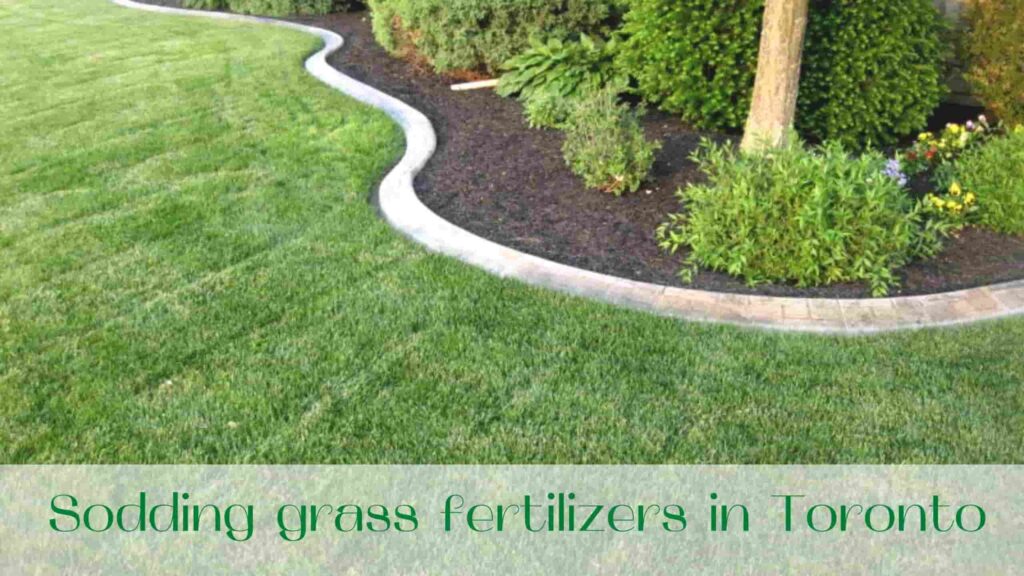
Fertilizer with special granules contains all the main macro-and microelements in a balanced ratio, which guarantees the normal development of the root system of the lawn. Humic compounds contribute to the full development of the lawn, preserving the stable green color of the grass for the whole vegetation period. Wrapping the pellets with their roots, the grasses consume mineral elements gradually.
Mineral compounds increase the absorption of useful substances up to 98%. They remain in the soil for a long time, continuing their effect for two years.
When using other grass mixtures, in order to improve the overall fertility in nutrient-poor soils it is recommended to apply a basic fertilizer before digging, which can be both organic (peat, manure) and mineral.
Apply organic fertilizer for sodding grass in spring or autumn.
When applying mineral fertilizer in the spring, use a compound fertilizer containing nitrogen, phosphorus, and potassium, or a three-component mixture thereof.
If fertilizing in the fall, use a nitrogen-free fertilizer (superphosphate, potassium salt, etc.). Apply the mineral fertilizer 1-2 days before plowing (re-cultivation) in the doses indicated on the fertilizer packages.
Sodding grass seeding and watering
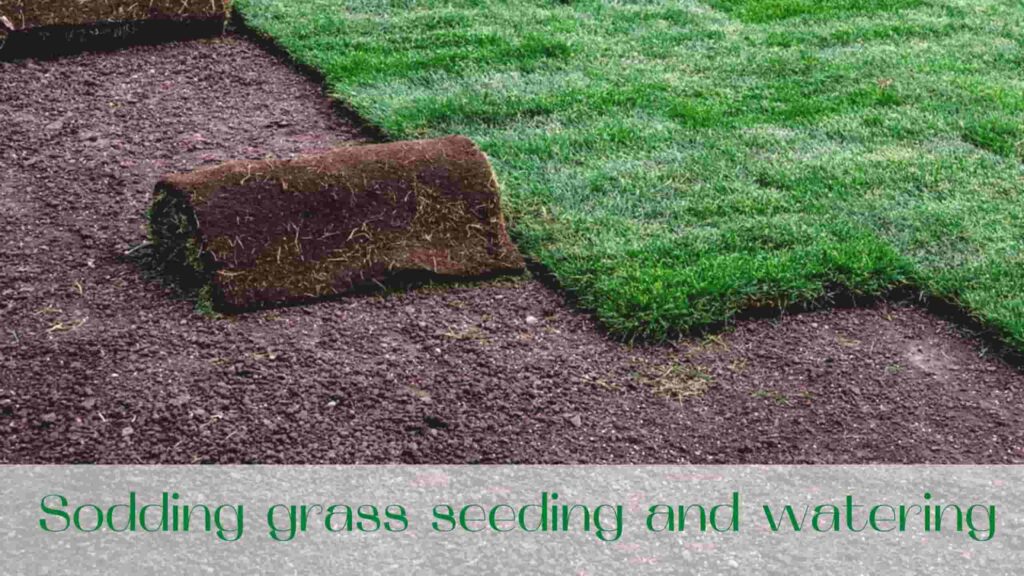
An uncomplicated process requires certain operations to be performed correctly.
Before sowing the grass mixture for sodding grass is thoroughly mixed.
Sow in windless weather, you can immediately after you have finished loosening the soil and leveled its surface.
In order to avoid footprints on loose soil, as well as to ensure a more uniform burial of seeds, it is recommended to compact the top layer of soil just before sowing, using a roller, lawn roller, wide board, sheet of plywood or other improvised means. On light (sandy, sandy loam) soil, trampling is also recommended.
Using an ordinary or fan rake, lightly loosen the top layer of soil to a depth of up to 3 cm.
There are two ways of sowing:
- By hand;
- Using a special sowing machine.
If you prefer to sow your sodding grass by hand, divide the seeds into four equal parts and sow them from four sides: 1/4 along the plot, 1/4 in the opposite direction, 1/4 from left to right, 1/4 from right to left. A simpler option: divide the seeds into two parts. Sow one part in one direction, the other part in the opposite direction.
When sowing with a seeder, divide the seeds into two equal parts and sow in longitudinal and transverse directions.
After spreading the grass mixture, you can rake the soil slightly so that a layer of earth no thicker than 5 mm covers the seeds.
To prevent the seeds from being blown away by the wind and pecked out by birds, it is recommended to slightly compact (roll) the soil using any improvised means. A net swath is preferred to a smooth swath. Using a net swath is an easy and effective way to get the seeds into the topmost layer of soil, the surface remains homogeneous and no crust is formed on it.
Do not roll the lawn when the soil is wet.
An important activity when sowing seeds is watering. Do this in the evening, as watering during the daytime can do more harm to the seeds than good.
Water the area abundantly, but don’t allow puddles until the grass grows 1 – 2 cm. Then water as needed. Water by gentle irrigation or sprinkling to avoid puddles.
Do not walk on the grass until it reaches 6 – 8 cm in height.
To avoid all the complications and potential mistakes, we recommend contacting the real experts in lawn, roll grass, and sodding grass Toronto – “Captain Handy”!
Award-winning Landscaping Company
CONTACT US TODAY
for a Free Estimate!
Contact us and speak with one of our service professionals to schedule a visit today!
GET A FREE QUOTE